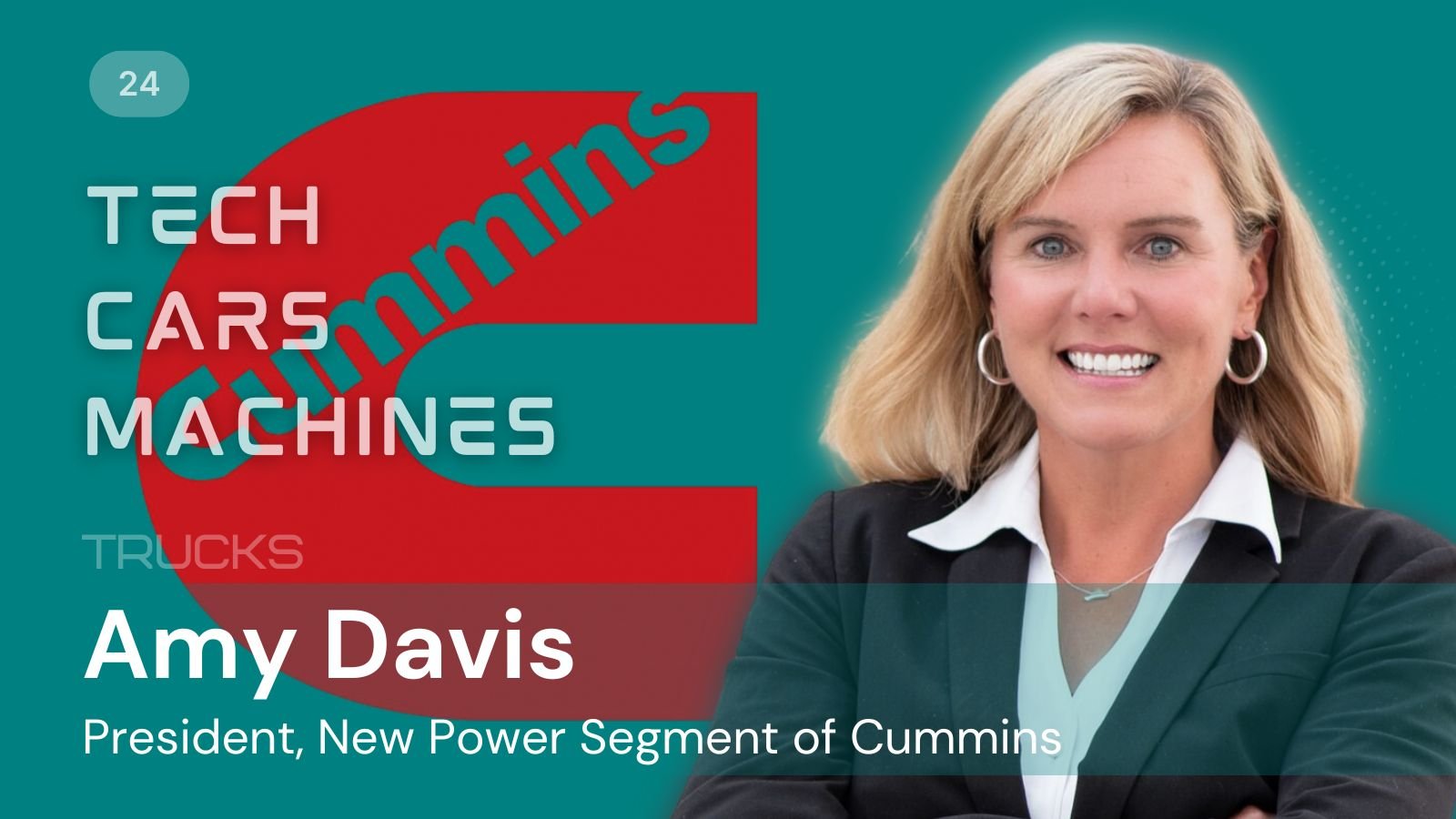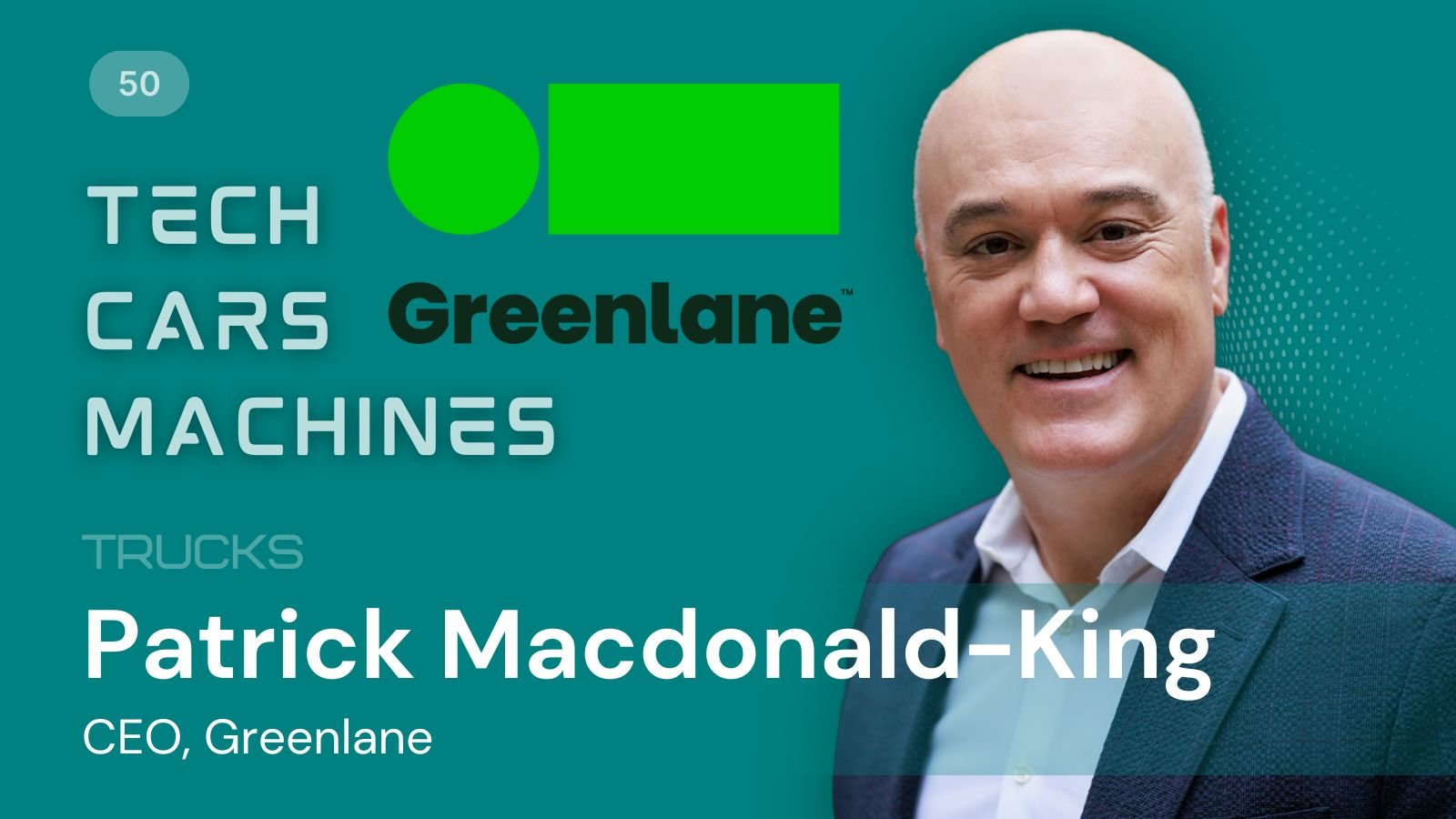Advanced Clean Transportation Expo, 2025
Listen on Apple Podcasts, Spotify and everywhere else.
I’m concerned for the job prospects of silkworms and trees. I’m here with 12,000 of my closest friends at the Advanced Clean Transportation Expo in Anaheim, California, right across from Disneyland. The name doesn’t make it clear, but ACT is exclusively focused on commercial transportation. The crowd is business-oriented and dressed like it, but I have not seen a single tie on men or a silk scarf on women, and not once did I see business cards being exchanged. What are silkworms to do? At least the trees can offer themselves up for uses other than card stock.
Like the similarly business-oriented Manifest conference from a couple of months ago, there was a slightly surreal sense to the event. I’m not sure there is a single business here won’t be affected, or even have their viability threatened, by the new federal administration’s climate, energy, and tariff policies, whatever they may be when and if they settle down. So while the future is hard to predict, as they say, the near term is even harder to predict. So let me discuss some observations affecting the long term.
First, China. While there are relatively few Chinese manufacturers present here compared to CES, the big consumer electronics and auto show in Las Vegas, my takeaway is the same. To my eye, when I noticed a difference in quality between the Chinese offerings and their competitors, it was that the Chinese one was superior. I rode in a school bus offered by BYD under the “Ride” brand name. It was a great product on the inside, and the outside frankly looked much more modern than one of the other two competitors who had products on display (Daimler’s Thomas Built Buses and Traton’s International). Later, at Ride’s booth, I ran into two employees from these competitors who were unfamiliar with the brand and its ownership. Just like the passenger car space, I think the Chinese offerings will be extremely competitive, and the legacy players are behind in this recognition in the commercial space. Interestingly, the Ride buses are manufactured (or at least assembled) in California.
Second, electrification. I was impressed at the breadth of electrified offerings, from light trucks through Class 8 vehicles that can pull close to 20 tons of cargo. The Daimler, Traton, and Volvo offerings were sleek and well-integrated, while Seattle-based Paccar, known for being conservative and not rushing for the new, also displayed some offerings but which were noticeably less sleek. In my conversations, it’s clear that in the near term, the economic case for adopting commercial BEVs depends substantially on grants and regulations. They remain more expensive to purchase, might have some cost advantages in operation, and definitely require more attention to recharging than fossil fuel vehicles. Now, some scenarios lend themselves well to electrification, such as the aforementioned buses, as well as heavy-duty pickup trucks used, for example, by electric utility workers for daily operations. In these cases, the routes and therefore the battery range required are well-understood; they can charge at night when it’s cheaper and charging speed doesn’t matter as you have many hours to do so. On the brighter side for BEVs, most fleets want to gain experience with them as the belief is still that over the years, improved technology and government mandates will lead to meaningful adoption. As such, the major OEMs seem committed to maintaining a roadmap, including the continued expansion of charging networks through entities such as Greenlane (our last episode) and Milence in Europe (our next episode). One growing lobby for these vehicles are actually the drivers. The smoothness, silence, and acceleration benefits of EVs that you know about from passenger cars carry over to these massive vehicles, and it’s hard to get the drivers out of them and back into combustion vehicles. I had the chance to drive, yes, actually drive, a massive electric day cab (the big front part of semi-trucks), and honestly, it drove like a Lexus or a Mercedes.
Third, sustainability in general. Commercial transportation is a dollars-and-cents business and much less prone to emotion than consumer purchases. However, I’m not noticing a substantial decline in corporate commitment to long-term initiatives. Definitely, there is a pullback by some, but it’s accepted that the science, weather observations, public sentiment, and regulation in most of the world are pointed in only one direction. Probably the biggest driver, no pun intended, is Amazon, which continues to aim for net-zero carbon emissions across its operations by 2040. Also, there is an increasingly diverse mix of technologies available to suit applications. For example, two relatively newer energy sources, renewable natural gas and renewable diesel, are getting more buzz than I’d seen before, including from producers like Chevron. Both fuels are “drop-in,” meaning they can replace the non-renewable versions without modification to the vehicle. RNG is made from methane, a much more powerful greenhouse gas than CO2, and as such, its production can be carbon-negative. RD is made from cooking oils and agricultural products, which is the same starting point as biodiesel. However, different production processes mean RD is chemically identical to diesel, which of course makes it much easier to transition to.
This RNG and RD discussion is a good transition into my fourth and final update, government action. Setting tariffs aside, regulation and grants have a lot to do with adoption rates of sustainable solutions. For example, zero-emissions vehicles as a required mix of a fleet, grants to purchase those vehicles, and increasingly tight regulation of CO2 emissions are all important to clean transportation adoption, and in the US most of these influences are expected to decline with the new federal administration. That being said, state-level actions remain important. For example, the RNG and RD adoption that we discussed are mainly driven by California and Oregon. Some regulatory pullback may help. For example, the major players speak of hydrogen combustion, ie. directly burning hydrogen as a fuel, almost as the assumed fuel of choice over the long term for heavy-duty low-carbon transportation. This approach leverages existing manufacturing, engine, and powertrain technologies and after-market services much better than BEVs. In the U.S., this path is hampered by regulations (mainly from California) because only zero-emissions vehicles are allowed, which allow only for a zero-emissions vehicle, which excludes hydrogen which can get you 90-95% of the way there. This regulatory constraint relegates hydrogen to having to go into a fuel cell, which creates electricity, which then drives an electric motor. Many OEMs I talked to claim that fuel cells are unreliable, with a big exception being Toyota, which has a good track record of delivering things everyone else complains are impractical.
All right, it’s time to head for the airport, so I'm going to end it here. See you next time when we have the CEO of Milence to tell us about heavy-duty charging in Europe.







